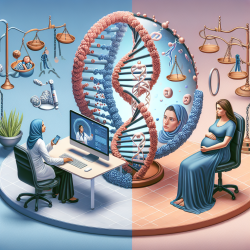Introduction
Empathy is a cornerstone of effective communication and social interaction, particularly in fields such as speech-language pathology. Recent research has illuminated the structural basis of empathy within the brain, specifically highlighting the role of the anterior insular cortex (AIC). This blog explores how these insights can be applied to enhance empathy skills in practitioners, ultimately leading to better outcomes for children receiving therapy services.
The Anterior Insular Cortex and Empathy
The study titled "Structural basis of empathy and the domain general region in the anterior insular cortex" provides compelling evidence of the AIC's role in empathy. The research analyzed structural MRI data from 101 healthy adult females, revealing a correlation between gray matter density in the left dorsal AIC and empathy levels. This region is part of a domain general region (DGR) involved in integrating emotional, cognitive, and sensorimotor information, which is crucial for global empathy.
Implications for Practitioners
Understanding the neuroanatomical basis of empathy can significantly enhance a practitioner's ability to connect with and support children in therapy. Here are some practical applications:
- Enhanced Empathy Training: Incorporating knowledge of the AIC into empathy training programs can help practitioners develop a more nuanced understanding of their empathetic responses.
- Personalized Therapy Approaches: Recognizing individual differences in empathy can guide the customization of therapy approaches, ensuring they are tailored to the child's unique needs.
- Improved Communication Skills: By understanding the cognitive and emotional components of empathy, practitioners can refine their communication strategies to be more effective and compassionate.
Encouraging Further Research
The findings of this study underscore the importance of continued research into the structural and functional aspects of empathy. Practitioners are encouraged to stay informed about the latest developments in neuroscience and consider how these insights can be integrated into their practice. Further exploration into how empathy-related brain structures influence behavior and therapy outcomes could lead to innovative approaches in speech-language pathology.
Conclusion
The structural basis of empathy, particularly within the anterior insular cortex, offers valuable insights for enhancing empathy skills in speech-language pathology. By applying these findings, practitioners can improve their ability to connect with and support children, leading to more effective therapy outcomes. As we continue to unravel the complexities of empathy, the potential for transformative impacts on therapy practices remains vast.
To read the original research paper, please follow this link: Structural basis of empathy and the domain general region in the anterior insular cortex.










